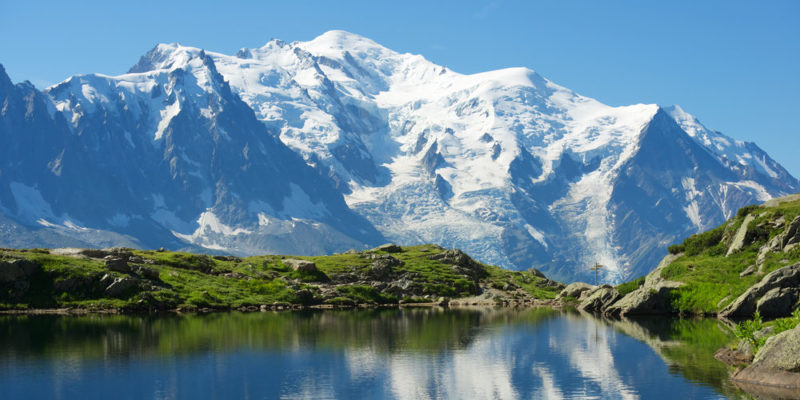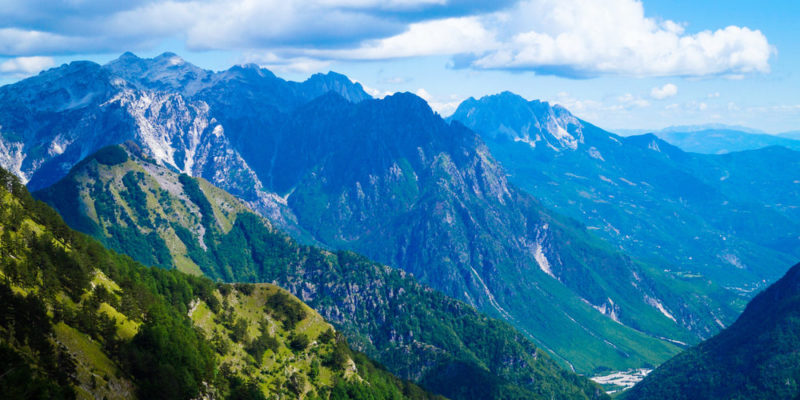We explain what the relief in Europe is like, the changes it underwent throughout history and what its main characteristics are.
What is relief in Europe?
Europe is one of the continents with the lowest average altitude, since it does not exceed 300 meters.
The relief of Europe is extremely old; the so-called shields of the north and east are the oldest territories belonging to the Precambrian period and are part of the Huronian orogeny, already highly eroded.
At the beginning of the Paleozoic , the northern sectors of Europe were delineated with the Caledonian orogeny , especially the British Isles and Scandinavia. Finally, most of the European continent appears in the Hercynian orogeny, including the mountainous massifs of today.
Characteristics of the relief of Europe :
Composition
The relief of Europe is made up of three major groups: the ancient massifs, the Alpine ranges and the plains .
-
Plains

Undoubtedly, what corresponds to the plain is the majority (approximately two thirds of the territory of Europe is covered by them); Notable among these are the Great Eastern European Plain , which stretches from the Ural Mountains in Russia to the Weser River in Germany ; the Atlantic plains located towards the North Sea ; the interior plains and the Mediterranean littoral plains. Some of these plains are crossed by important rivers, such as the Rhine or the Loire.
-
Oldest mountain formations
Newer mountain formations
The Alpine ranges are the most recent mountain formations ; they are generally located towards the south of the continent, around the Mediterranean coast.
-
Its highest mountains
 The highest mountains in Europe are in the Caucasus and the Alps , the highest peak is Mount Elbrús (5642 meters), in the first; Mont Blanc (4807 meters) also stands out in the second.
The highest mountains in Europe are in the Caucasus and the Alps , the highest peak is Mount Elbrús (5642 meters), in the first; Mont Blanc (4807 meters) also stands out in the second.
Coasts
The European continent has a great oceanic and maritime influence , since the proportion of coastline is very large (more than 43,000 km), and these coasts are often extremely jagged and in various regions they form imposing cliffs (Norway, Scotland) or large fjords (Scandinavia).
Other coastal landforms in Europe include gulfs , peninsulas, straits, and canals. There are also numerous islands surrounding the continent, such as the British Isles.
-
Hercynian Orogeny
Alpine Orogeny

Thus arises most of southern Europe: Cantabrian Mountains, the Pyrenees, the Alps, the Carpathians and the Crimean peninsula to the north; and the Betic mountain range to Mallorca, the Apennines, the Dinaric Alps, the Balkans, Crete and Cyprus to the south.
-
Changes in relief in the Mesozoic
Summary
In conclusion, the European continent is dominated by low-lying terrain , sometimes interrupted by gentle hills or some mountain ranges. It is a continent crossed by fertile valleys and wide plains.
The above content published at Collaborative Research Group is for informational and educational purposes only and has been developed by referring reliable sources and recommendations from technology experts. We do not have any contact with official entities nor do we intend to replace the information that they emit.
Veronica is a culture reporter at Collaborative Research Group, where she writes about food, fitness, weird stuff on the internet, and, well, just about anything else. She has also covered technology news and has a penchant for smartphone stories. .
Leave a reply
Your email address will not be published. Required fields are marked *Recent post

Sport: What Is It, Types, Risks, Features, Characteristics and Examples

Dogs: Emergence, Features, Characteristics, Feeding and Breeds

Story: Definition, Elements, Structure, Features and Characteristics

